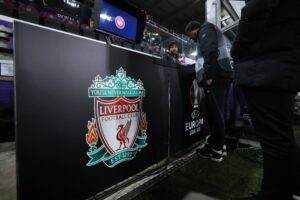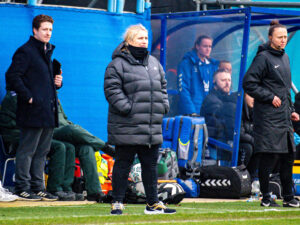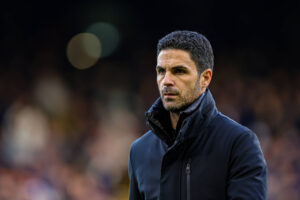What should have been the ‘Jack Wilshere Derby’ this weekend, between his current club West Ham and his old club Arsenal, will instead be nothing of the sort. In fact, as Wilshere tries to fight his way back from yet another injury (sadly, he is one of those players who is not so much injury-prone as injury-addicted), the sorry truth is that the supporters of both sides may well think that they are better off without him.
Both West Ham and Arsenal Are Better Off Without Jack Wilshere
Too Much Too Soon
Wilshere’s story is surely a cautionary one about the dangers of playing or, more accurately overplaying, young players too early in their career. He first broke through at Arsenal more than a decade ago, making his debut when he was only 16. However, as was the case with other teenage prodigies who began playing regular first-team football before they were out of their teens, such as Michael Owen and Fernando Torres, ultimately it seems as if his prolonged exposure to the rigours of Premier League and Champions League football at such an early age will end up robbing him of what should have been the best years of his career.
That was why Arsenal, in general, and Unai Emery, in particular, were happy to let Wilshere leave the club last summer. In his wake, they signed two younger and much fitter midfielders, Lucas Torreira and Mattéo Guendouzi, to play in Wilshere’s central midfield position. They may both lack Wilshere’s invention and goal-scoring ability but they more than make up for it by having infinitely greater mobility and defensive discipline, which, after Arsene Wenger’s decade-long failure to sign a proper defensive midfielder (let alone two), was exactly what Arsenal needed. Now, of course, Emery just has to add the defence to go with the defensive midfielders.
Not Quite Right
Wilshere had obviously hoped that he could reboot his career at West Ham. Like several other Arsenal players, notably Tony Adams and Ray Parlour, West Ham were his boyhood club and so, when Arsenal failed to offer him a new contract, he moved to the London Stadium. However, he did not enjoy the happiest of new chapters as West Ham, with several other new signings in the team, including Felipe Anderson and Issa Diop, and operating under a new manager in Manuel Pellegrini, got off to a miserable start. They lost their first four Premier League games, including one against Arsenal at The Emirates Stadium, and were soon rock-bottom of the Premier League table.
Worse still for Wilshere, it soon became apparent that pairing him in central midfield with the club captain, Mark Noble, was a case of playing two similar players too closely together. In particular, neither one of them is especially mobile (Noble was never blessed with great mobility and Wilshere, through injury, has lost most of his). As a result, Pellegrini eventually replaced Wilshere with the younger and much more defensively minded Declan Rice for the away game against Everton.
Almost immediately, Rice showed why he is the subject of a country v country row between England and Ireland for his services, forming a far more impressive midfield partnership with Noble, with the younger man doing the older man’s running for him, while freeing Noble to play further up the pitch in a way that was impossible when he was alongside Wilshere. The end result has been that Wilshere has been unable to get back in the West Ham side, and that would probably have been the case even if he hadn’t got injured again later in the autumn.
A Questionable Acquisition
Frankly, there must be some West Ham fans who wonder why their club ever signed Wilshere in the first place. In addition to the obvious injury worries about the player, the Hammers have previous form of signing an Arsenal cast-off and then almost immediately realising why the Gunners had let him go. Ten years ago, just as Wilshere was breaking through at Arsenal, Freddie Ljungberg joined West Ham from the Gunners and, unfortunately for West Ham, he only played for them for one largely undistinguished season before leaving. The fear is that Wilshere will be the new Ljungberg – the ageing, immobile West Ham version, rather than the Arsenal version that fired them to the League and FA Cup double in 2002. With West Ham already having Andy Carroll on their books, it is not as if they are short of ageing, injury-ravaged former teenage prodigies.
Obviously, it is still relatively early days for Wilshere at West Ham, but the genuine fear is that his time there will merely be a continuation of his last, injury-wracked days at Arsenal. With Rice and Noble dovetailing so well in midfield, if and when he does regain fitness he may not be able to get back in the side in his preferred position. Moreover, even if he is prepared to play further forward as a number ten, as he occasionally did at Arsenal, the eventual return from injury of Manuel Lanzini will almost certainly mean that he will only ever be second-choice in that position, too.
When Jack Wilshere first played for Arsenal all those years ago, both Arsenal and England fans fervently hoped that he would be the kind of tough but skilful midfielder that Spain, who were then the dominant international team with their tiki-taka style of quick interpassing, could boast in abundance: Xavi; Iniesta; David Silva; and even Santi Cazorla, who replaced Wilshere in central midfield at Arsenal before injury (and infection) did for his own career. Now the fear is that Wilshere will become yet another lost boy of English football, one who failed to translate youthful potential into lasting achievement.
Main Photo






